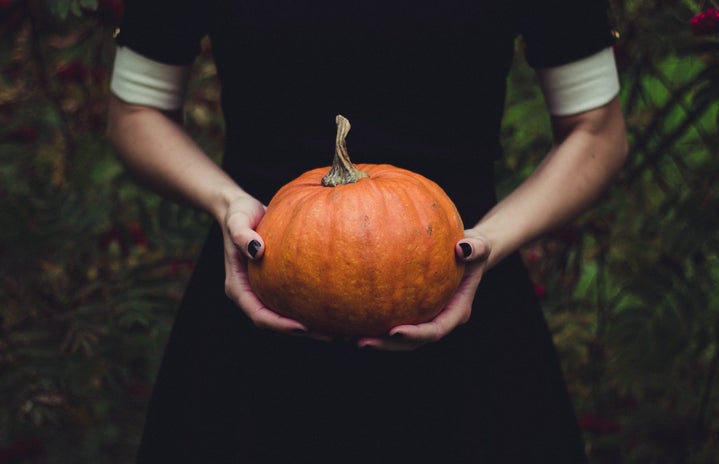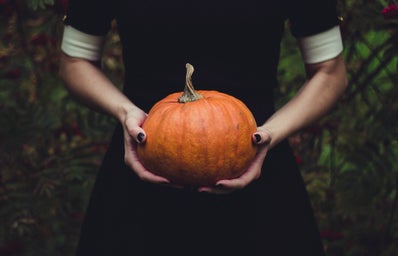Between buying cheaply made (but painfully expensive) Halloween costumes, splurging on candy and pumpkin spice lattes, as well as throwing or attending parties, it seems as though mass waste during spooky season is inevitable. That being said, this does not mean there are not ways to be more eco-friendly while celebrating this time of year. Here are four ways you can be more sustainable during Halloween, so we can not only preserve this tradition for future generations, but also protect the health and wellbeing of all beings on this planet (most of whom do not get a say in the ways in which we ruin Earth).
1. Reuse, borrow, or thrift: Your costumes do not have to come from Party City
Perhaps a repercussion of society’s excessive participation in capitalist consumerism, we have made it a habit to splurge. From boredom-fueled shopping sprees on Amazon to costly costume-buying from million-dollar companies, we feel it necessary to buy into the idea of Halloween, even though we know we have a choice. As the consumption rate rises, unfortunately so does the production of waste: whether we care to admit it or not, this waste is contributing to the depletion of our planet (and notably the depletion of our savings accounts, too!).
I propose that instead of buying new costumes every year, we consider alternate methods of finding a costume, like reusing pieces already in your closet. There is also the option of visiting the local thrift store to find unique pieces for your costume . Pro tip: Value Village gives you a 20 percent off coupon if you donate! Since so much of all textiles are thrown away yearly, it is important to recycle clothing when possible. Thrifting, donating unused clothing, reusing pieces, and participating in clothes swaps are more eco-friendly alternatives for looking cool while not contributing to mass consumerist waste.
2. Shop local produce: Your local farmers work hard!
It is no secret that locally-grown produce tastes a lot better than the bruised fruits that have been shipped overseas, and which rot under the luminescence of the overhead lights. To be more mindful of our ecological footprint, I suggest that a step we can take during fall is to purchase local produce that is in season. This maintains a flow of money within our communities and reduces our carbon footprint since extensive, fuel-intensive travel is not necessary for this exchange. Hamilton’s Farmer’s Market, for example, located on York Boulevard, has many low price but high quality options for locally grown food and produce.
3. At parties, use glassware, reusable mugs, and utensils
I sympathize with the aestheticization of the red solo cup: an emblem of the “university experience.” At the same time, it is time we move on to something more sustainable. I recently attended a party where we used glassware instead of single-use, plastic cups. Not only was the glass a perfect addition to my outfit (it looked like a Victorian chalice), but it kept me and others from using and subsequently throwing out tons of single-use plastic– a step that is easy enough to take when thinking about sustainability during the season.
Trust me, I get it. Buying single-use cutlery and plates from the dollar store saves dishes when you are throwing a party of any sort. But with a conscious effort to be sustainable comes an acceptance that you should not always allow yourself to be lazy. The Earth depends on it. So give the vampy chalices a shot–they may surprise you.
4. Enjoy your Pumpkin Spice Latte’s sustainably: support local coffeeshops and try alternative kinds of milks
One of my favourite parts of spooky season is the resurgence of fall-themed coffee drinks. As a barista, myself, I revel in the joy of crafting and drinking pumpkin spice everything. But, on that note, this also contributes to mass waste. Think of the thousands of cups littered and un-recycled. This could be lessened or avoided if we made conscious decisions to bring our own cups to coffee shops (especially since coffee consumption, at least for me, is a multi-daily activity).
Further, it is important to remember the implications of our consumption of these drinks. For example, the production of cow’s milk necessitates excessive freshwater, land, and resources, and notably contributes largely to greenhouse gas emissions. This means cow milk is significantly more harmful to the environment than some of the (plant-based) alternatives, like oat or soy milk. So, it might be worth it to switch to travel mugs and oat lattes.
Sustainability does not have to be a buzzkill! Remember that being conscious of how you can be sustainable does not have to be a chore, and it will not paint, in bold red letters, the word “Buzzkill” onto your chest. You can still enjoy spooky season and participate in its celebration without being environmentally harmful. Let’s raise our vampy glasses to a sustainable future for all!


